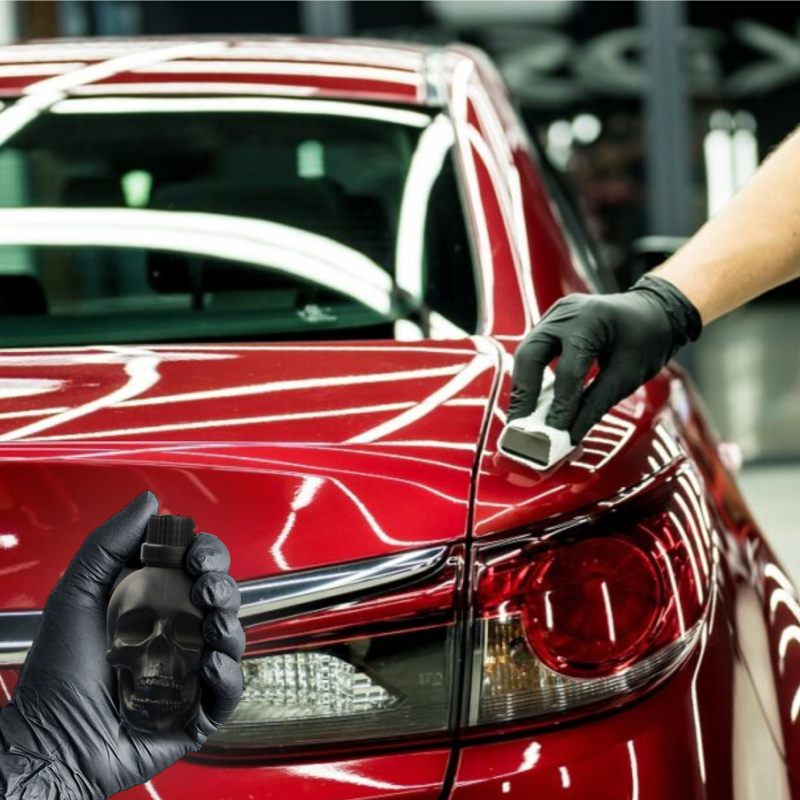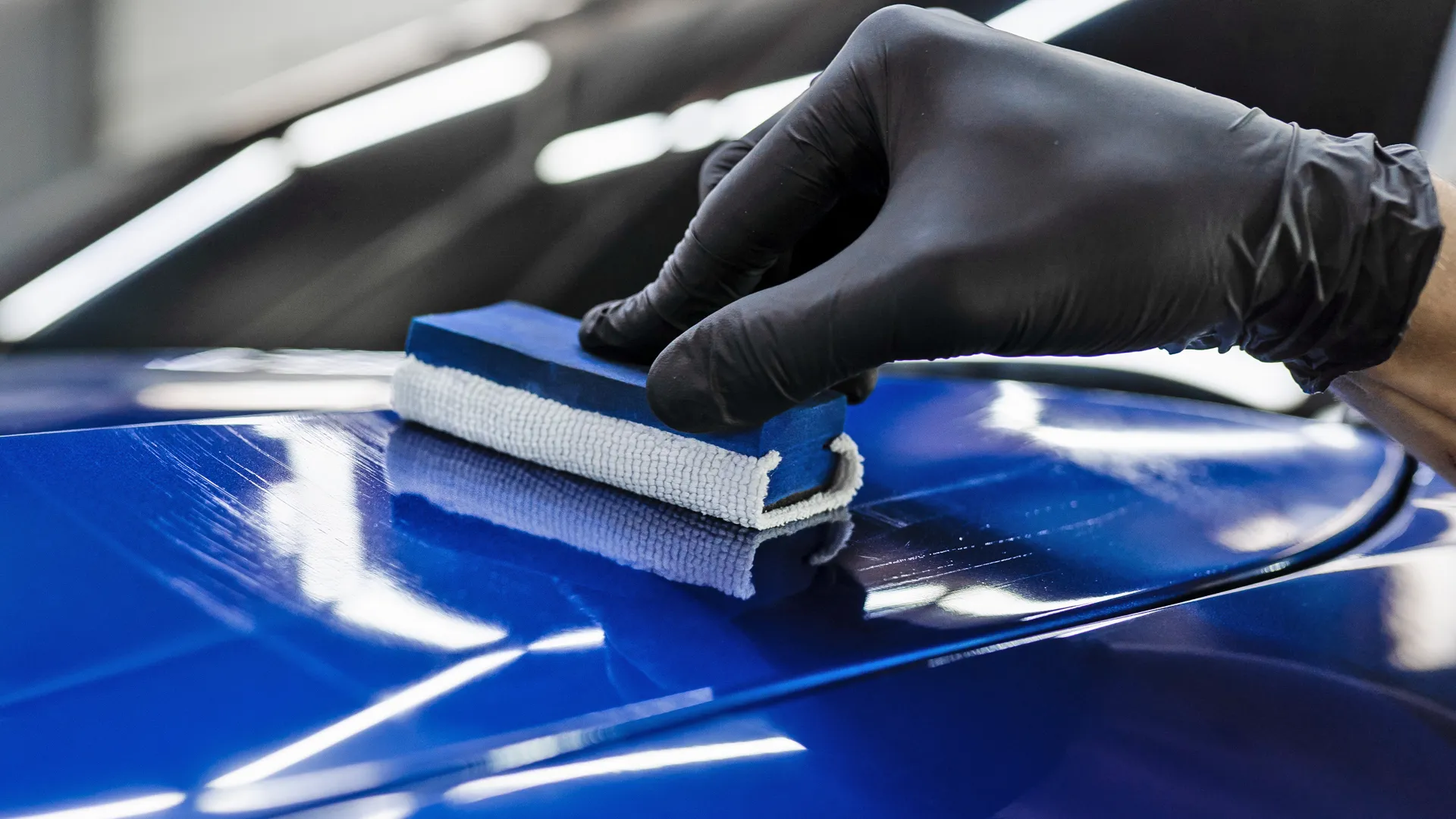The real story about Ceramic Coating Newark’s durability
Checking out the Scientific Research Behind Car Ceramic Coating and Its Protective Qualities
The scientific research of car ceramic coating offers a fascinating research study in sophisticated vehicle defense. Composed mostly of silicon dioxide and polymers, these layers develop a durable bond with vehicle paint. This interaction improves resilience versus ecological dangers while offering hydrophobic benefits. Nonetheless, the intricacies of exactly how these finishes work and their lasting advantages continue to be much less comprehended. Unboxing these information exposes why ceramic coverings are ending up being a preferred selection for automobile treatment
What Is Ceramic Coating?
Ceramic coating is a fluid polymer that chemically bonds to the surface of an automobile's paint. This advanced protective layer improves durability and offers premium resistance to ecological factors. Unlike standard wax or sealants, which supply momentary security, ceramic finishes create a durable guard that can withstand rough problems such as UV rays, acidic contaminants, and severe weather. When applied properly, the coating creates a hydrophobic surface area, triggering water to grain and slide off, which helps in maintaining the car's sanitation. Additionally, it provides improved gloss and deepness to the paint, making the lorry show up even more sleek and dynamic. The application procedure normally entails comprehensive surface preparation, consisting of cleaning and polishing, to ensure peak bonding. Consequently, ceramic finishes are coming to be significantly prominent among car fanatics and those seeking to safeguard their financial investments, promising to keep the vehicle's aesthetic allure while lowering the regularity of upkeep.
The Make-up of Ceramic Coatings
The intricate formulation of ceramic finishings mainly is composed of silicon dioxide (SiO2), which is stemmed from natural sources like quartz and sand. This essential component gives the foundation for the coating's toughness and safety top qualities. Along with SiO2, ceramic layers frequently include different polymers and additives that boost attachment, versatility, and resistance to ecological factors. These substances work synergistically to create a durable obstacle against impurities such as dust, chemicals, and UV rays.Furthermore, some solutions include titanium dioxide (TiO2) or other nanomaterials, which can augment the coating's hydrophobic homes, resulting in improved water repellency. The exact make-up can differ significantly amongst suppliers, influencing efficiency and durability. Eventually, the combination of these aspects finishes in a protective layer that not only enhances the aesthetic allure of cars but also serves to lengthen their lifespan by protecting the surface from potential damages.
Just How Ceramic Coatings Job
Comprehending how ceramic coverings work involves discovering their chemical make-up, which adds to their safety top qualities. The application process is important for accomplishing perfect results, while durability and resilience factors establish the coating's efficiency with time. With each other, these elements highlight the benefits and performance of ceramic finishings for lorry defense.
Chemical Structure Explained
While numerous car proprietors seek durable protection for their lorries, the chemical structure of ceramic finishes plays a critical function in their effectiveness. These coatings primarily contain silicon dioxide (SiO2), which is originated from all-natural minerals. This compound develops a strong bond with the lorry's paint, developing a durable, safety layer. In addition, several ceramic finishes include titanium dioxide (TiO2), boosting their hydrophobic residential properties and resistance to UV rays. The existence of polysiloxanes can additionally improve flexibility and longevity. Together, these aspects add to the coating's ability to repel water, dust, and impurities, while additionally supplying a high-gloss coating. Understanding this chemical structure assists car proprietors value the robust security offered by ceramic layers.
Application Refine Summary
Using ceramic finishes includes a meticulous procedure that assures perfect bonding and security for the automobile's surface area. Initially, detailed cleaning and purification of the car's exterior are executed to get rid of dirt, gunk, and previous waxes. This action confirms that the surface area is devoid of contaminations that can hinder attachment. Following this, the paint is commonly polished to improve quality and remove any kind of flaws. As soon as prepared, the ceramic coating is used in little sections making use of an applicator pad, enabling for uniform insurance coverage. The coating is then delegated treat, developing a strong chemical bond with the surface area. Proper treating times and conditions are essential, as they validate the coating achieves its optimum efficiency and safety high qualities.
Durability and Durability Variables
Ceramic coverings are created to give resilient security via their sophisticated chemical composition, which develops a durable barrier versus environmental contaminants. The toughness of these finishings is affected by factors such as the thickness of the application, the quality of the item, and the problems under which the car is exposed. Top quality ceramic coatings can last several years, resisting scrapes, UV rays, and chemical spots. Proper upkeep, including normal cleaning and periodic reapplication, can even more boost long life. Furthermore, ecological variables like environment and direct exposure to toxins can impact the lifespan of the coating. In general, when used and kept appropriately, ceramic finishings provide exceptional durability, making them a preferred choice for car lovers looking for to maintain their car's look.
Hydrophobic Qualities and Water Repellency
Hydrophobic buildings are a trademark of top quality car ceramic finishings, considerably boosting the car's surface area performance. These finishings develop a molecular bond with the car's paint, resulting in a surface that pushes back water properly. When water comes into contact with a ceramic-coated surface area, it beads up and rolls off, reducing the quantity of fluid that remains on the paint. This behavior not only adds to a cosmetically pleasing appearance but additionally lowers the accumulation of contaminants such as dirt, gunk, and roadway salts.The enhanced water repellency leads to simpler cleaning and maintenance, as much less initiative is required to eliminate undesirable substances. In enhancement, the hydrophobic nature of ceramic coatings helps in protecting against water areas, which can mar the surface of uncoated surface areas. Generally, the incorporation visit our website of hydrophobic buildings in ceramic finishings plays a crucial duty in maintaining the car's beautiful look while simplifying maintenance.
Protection Versus Scratches and UV Damages
Car ceramic coverings offer significant protection against scratches and UV damage. The scrape resistance device produces a resilient layer that takes in effects, while the UV securing advantages assist keep the vehicle's paint integrity in time. Together, these functions contribute to a longer-lasting and aesthetically appealing finish.
Scratch Resistance Device
Using innovative modern technology, ceramic layers offer a durable shield against scrapes and UV damages, boosting learn this here now the longevity and appearance of automobile surface areas. The scratch resistance system of these finishes is credited to their distinct molecular framework, which forms a long lasting bond with the lorry's paint. This bond produces a hard, protective layer that can absorb effects and resist abrasions. Furthermore, the smooth surface of the coating reduces rubbing, making it tough for impurities to adhere and create scratches. The chemical structure of ceramic layers typically consists of nanoparticles that strengthen the safety layer, further boosting its strength. Subsequently, lorries treated with ceramic finishes show considerably improved scrape resistance compared to typical wax or sealants, ensuring an immaculate finish in time.
UV Shielding Benefits
The protective top qualities of ceramic layers expand past scrape resistance to include substantial UV securing benefits. These finishings develop a durable obstacle that mirrors harmful ultraviolet rays, guarding the automobile's paint and underlying materials. Long term exposure to UV radiation can bring about fading, oxidation, and damage of the paint coating. By including ceramic finishings, car owners can effectively reduce these threats, preserving the aesthetic appeal and stability of their cars. In you could try here addition, the UV obstructing residential or commercial properties add to enhanced durability, decreasing the frequency of repainting and upkeep. Ultimately, the integration of ceramic layers uses an extensive service for shielding automobiles from the harmful impacts of sunlight exposure, guaranteeing a continual, vivid look with time.
The Long life and Upkeep of Ceramic Coatings

Frequently Asked Concerns
Can Ceramic Coating Be Applied to Any Type Of Sort Of Lorry?
Ceramic coating can be put on various kinds of lorries, including vehicles, trucks, and bikes. However, surface prep work and compatibility with details products are important for excellent attachment and effectiveness of the coating.
How Much Does Ceramic Coating Typically Price?
Ceramic coating typically costs between $500 and $2,000, depending on factors such as vehicle dimension, coating top quality, and specialist application. The investment can offer resilient defense and boost the lorry's appearance in time.

Is Specialist Application Required for Best Outcomes?
The necessity of professional application commonly depends upon desired results. Professionals typically guarantee correct surface prep work and application methods, causing optimal bonding and longevity of the coating, which may be testing for inexperienced individuals to attain.
Can Ceramic Coatings Be Gotten Rid Of or Fixed?
Ceramic layers can be gotten rid of or repaired, though the process may require specific solvents or strategies - Ceramic Coating Newark. Appropriate removal is vital to avoid damage to the underlying surface, stressing the significance of expert support for perfect outcomes
Exactly How Does Ceramic Coating Compare to Traditional Wax?
The contrast in between ceramic coating and typical wax discloses that ceramic finishes supply superior toughness, enhanced security versus environmental pollutants, and longer-lasting luster, while wax calls for a lot more frequent application and gives less overall resistance to damage.